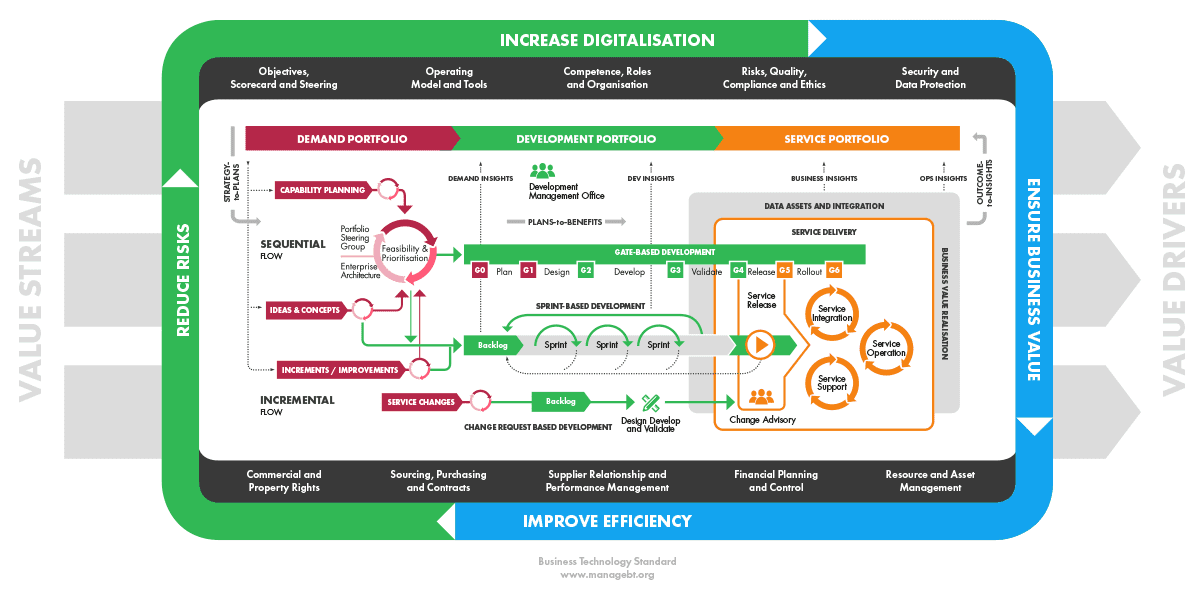Business technology operations require financial and human resources as well as software, hardware and data assets. The use of financial resources has been defined in chapter 4.4 Financial planning and control and this chapter focuses on human resources and assets, which consume approximately 20-40% of the total costs of business technology. The rest is spent on services and tendency is to purchase resources (work) and assets (hardware and software) more as a service rather than individually or separately.
Resource and asset management has four major activity topics: forecast the demand, build the capacity, fulfil the demand and optimise.
Forecast the demand
Build the capacity
Fulfil the demand
Optimise
The Business Technology Standard recommends that standard and normal resources and assets are predefined and made available in an order catalogue.
Standard resource or asset request does not require any purchasing, or the purchasing does not require any approval. An example of a standard asset request is a subscription of a software where an organisation has agreed the enterprise quota. Normal resource or asset requests require an approval but are based on the existing commercial frame agreement and require no commercial negotiation.
An example of a normal resource request is an order for a project manager from the preferred supplier. The proposed project manager must be qualified by the requester but as the prices and other terms are predefined, the automated workflow process takes care of approvals and workorder.
The aim is to move from managing repetitive negotiations to faster on-boarding and thus increased speed and faster benefits consumption.
Figure 4.5.1 Resource management
Digitalisation is setting high expectation for speed and agility. The trend in resource management is therefore moving from hiring individual resources towards hiring full functioning teams trained to work together and according to the best practices defined by the organisation. Teams can be sourced either as a service with full delivery on the service promise as outcome or, as a resource in which case the purchasing organisation remains responsible for guiding and leading the work.
A practical example of sourcing a team can be digital office as illustrated below. A fully-functioning digital office could have the following roles as a service:
Organisation’s own key people such as CDO and business analyst can then complement this kind of functional team to give a boost to development of new digital services.
Figure 4.5.2 Digital office
